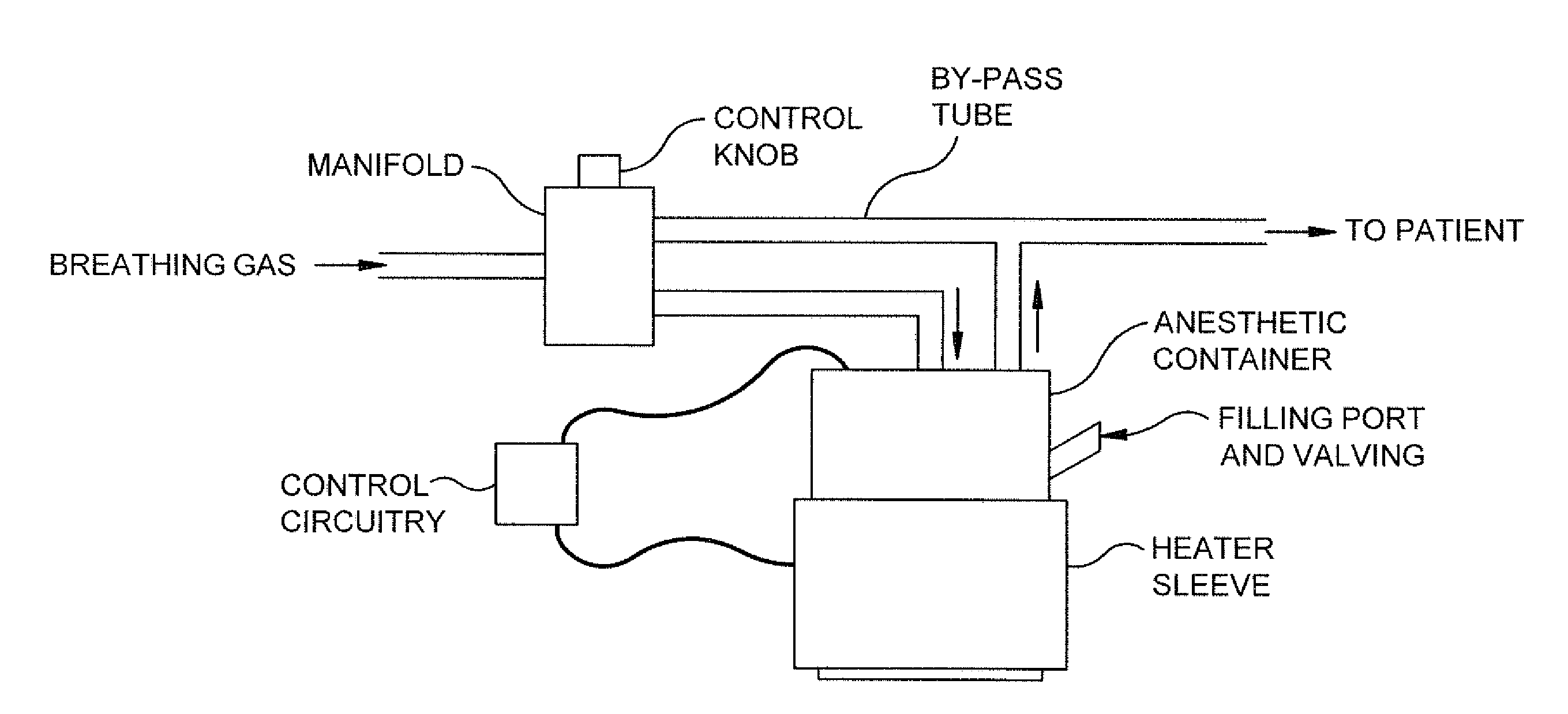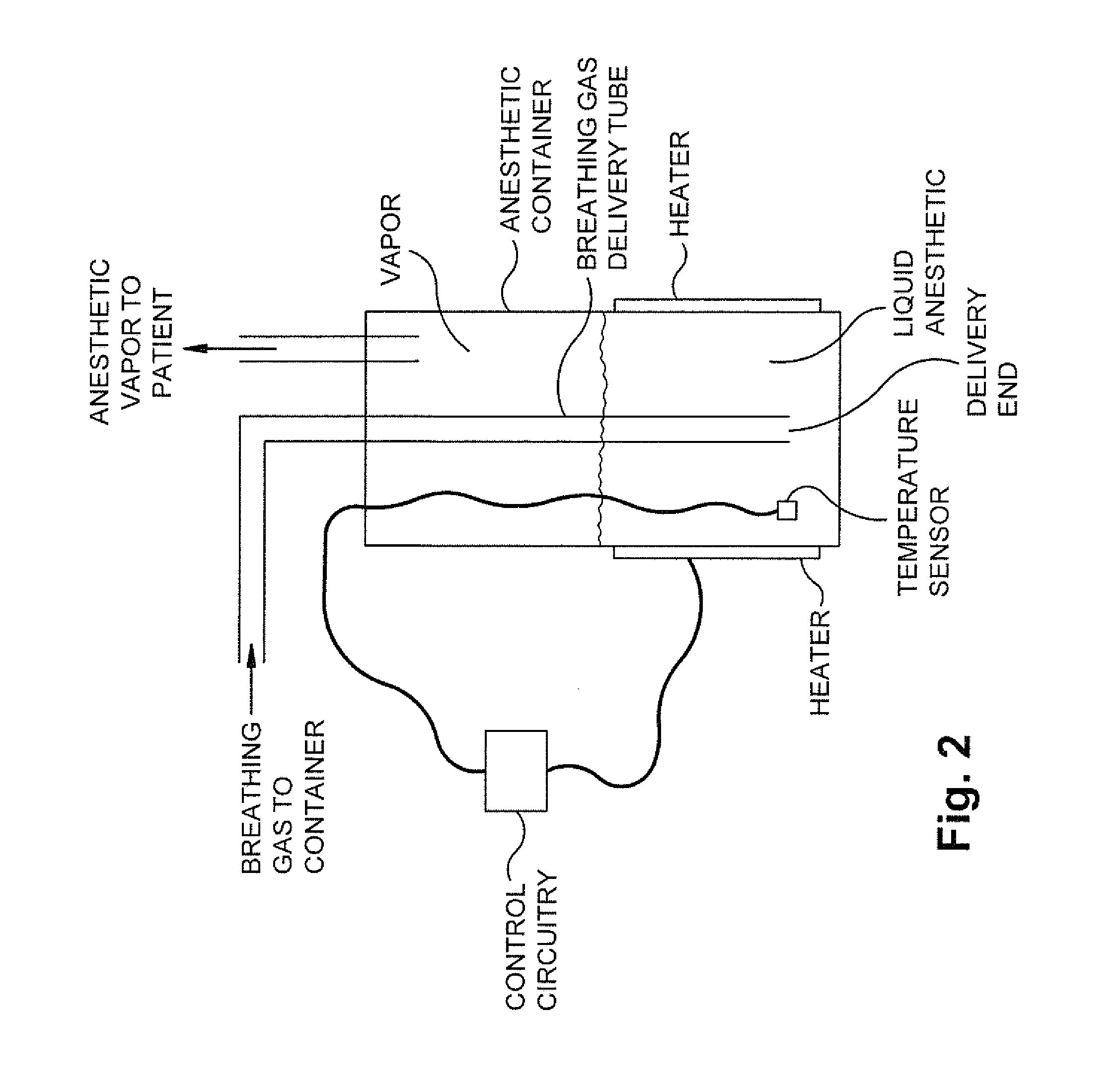Inhalation anesthetic vaporizer
a technology of inhalation anesthetic and vaporizer, which is applied in the direction of inhalators, medical devices, other medical devices, etc., can solve the problems of reducing the concentration or volume percent delivered to the patient, further reducing the temperature of a traditional vaporizer chamber, and reducing the vaporizer output over time. , the effect of reducing the temperature of the chamber and the vaporization of the agen
- Summary
- Abstract
- Description
- Claims
- Application Information
AI Technical Summary
Benefits of technology
Problems solved by technology
Method used
Image
Examples
Embodiment Construction
[0026]In accordance with the present invention, FIG. 1 depicts an anesthetic vaporizer. As described herein, the present invention addresses the challenges posed by prior art vaporizers, in that (i) latent heat of vaporization results in a drop in drug temperature that may result in a lower partial pressure, and (ii) lower partial pressure may result in lower concentration. The temperature of a given anesthetic for the device of FIG. 1 is a maintained at a set temperature ±0.5° C. or 1.0° C. (e.g., at 22° C.±0.5° C. or 22° C.±1.0° C.).
[0027]The vaporizer shown and described herein may incorporate at least the following aspects:
[0028]the vaporizer inflow tube is placed below the surface of the liquid anesthetic agent such that the outlet of the vaporizer inflow tube (or the delivery end of the delivery tube) is located anywhere from at least about 5 mm from the surface and no closer than about 2 mm (the term “about” in either of these instances being ±1 mm) to the bottom (relative to...
PUM
 Login to View More
Login to View More Abstract
Description
Claims
Application Information
 Login to View More
Login to View More - R&D
- Intellectual Property
- Life Sciences
- Materials
- Tech Scout
- Unparalleled Data Quality
- Higher Quality Content
- 60% Fewer Hallucinations
Browse by: Latest US Patents, China's latest patents, Technical Efficacy Thesaurus, Application Domain, Technology Topic, Popular Technical Reports.
© 2025 PatSnap. All rights reserved.Legal|Privacy policy|Modern Slavery Act Transparency Statement|Sitemap|About US| Contact US: help@patsnap.com



